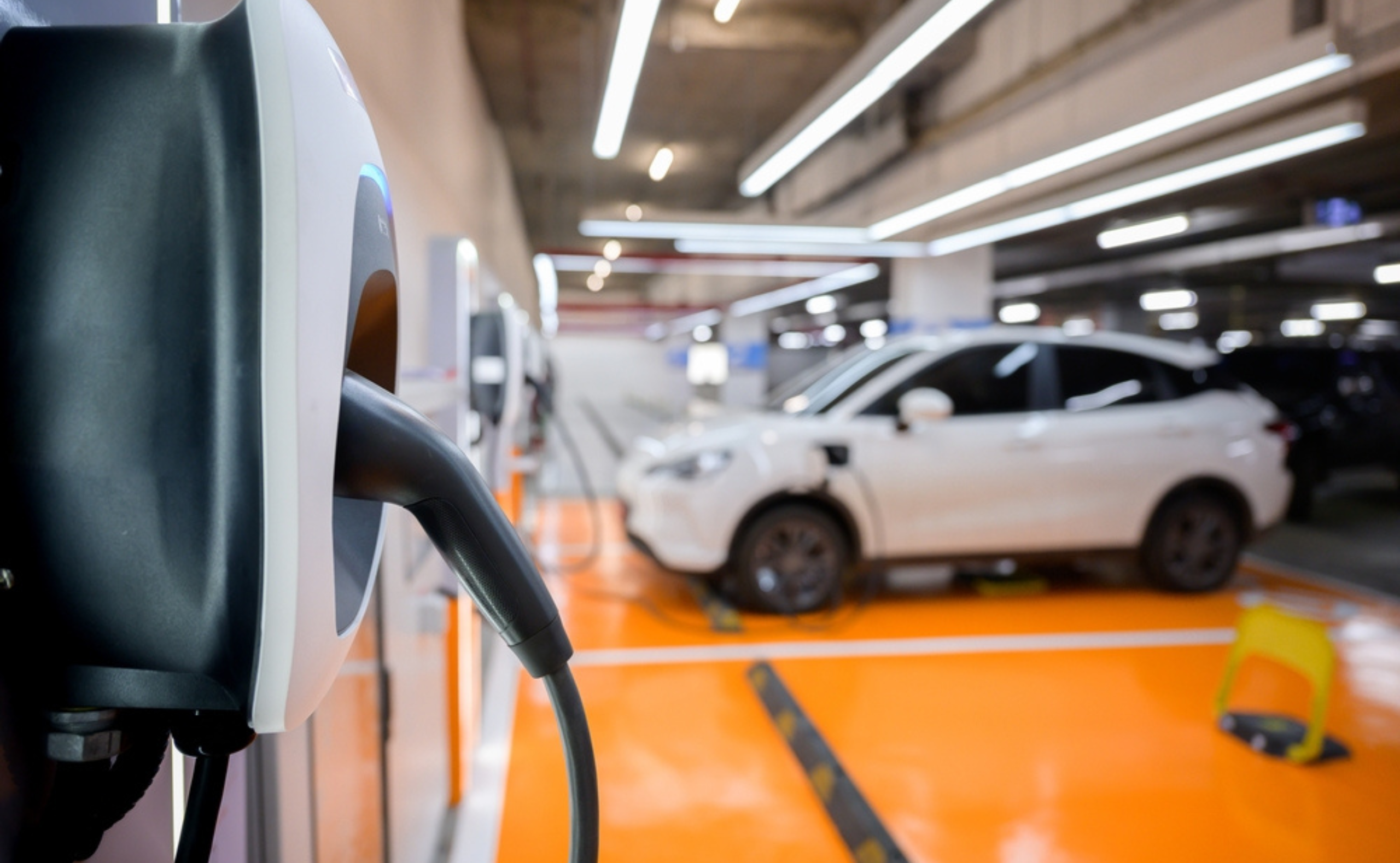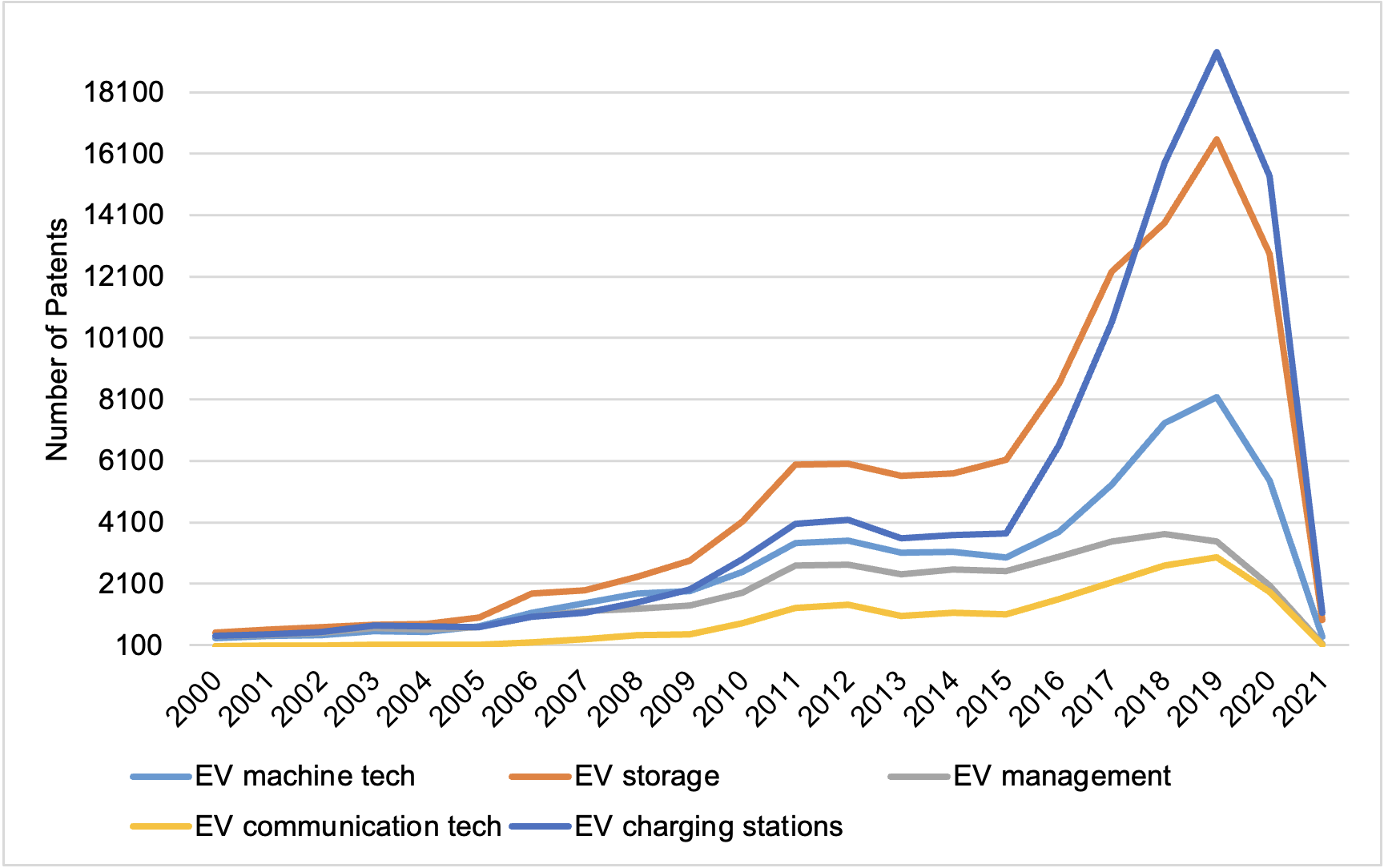 The energy sector contributes to 73% of global greenhouse gas emissions, highlighting the crucial need for a shift to cleaner and renewable energy sources for achieving net zero and a sustainable global future. Road transportation accounted for 37% of all energy-related carbon dioxide emissions globally in 2021 due to its heavy reliance on petroleum-based fuels, making it the biggest cause of global warming (Unger et al. 2010; Creutzig et al. 2015). Global energy demand for petroleum will continue to expand and peak in the mid-2030s as energy consumption in the road sector is expected to increase by 1.26%, with a 1% growth in urbanization mostly taking place in Asia and Africa (Chai et al. 2016; International Energy Agency 2022).
The energy sector contributes to 73% of global greenhouse gas emissions, highlighting the crucial need for a shift to cleaner and renewable energy sources for achieving net zero and a sustainable global future. Road transportation accounted for 37% of all energy-related carbon dioxide emissions globally in 2021 due to its heavy reliance on petroleum-based fuels, making it the biggest cause of global warming (Unger et al. 2010; Creutzig et al. 2015). Global energy demand for petroleum will continue to expand and peak in the mid-2030s as energy consumption in the road sector is expected to increase by 1.26%, with a 1% growth in urbanization mostly taking place in Asia and Africa (Chai et al. 2016; International Energy Agency 2022).
There has been a noticeable increase in the acceptance and use of electric vehicles (EVs) globally due to the rapid efforts made by many governments to encourage environmentally friendly vehicles in the transportation sector, particularly through the electrification of vehicles to reduce GHG emissions. According to Rietmann et al. (2020), by 2032, 30% of all passenger vehicles worldwide will be EVs. This may point to an increase in EV sales in the developing world, where economic growth and urbanization will be rapid (Aminzadegan et al. 2022).
As an example, as part of its National Electric Mobility Mission Plan, India set the goal of promoting 6 million–7 million eco-friendly vehicles in 2020 and implemented subsidy programs that included financial incentives, such as exemptions from road taxes and registration fees (Green Car Congress 2012). Meanwhile, the People’s Republic of China (PRC) has established various initiatives to promote the use of EVs, including both financial and nonfinancial incentives, and in 2017, the PRC’s EV users comprised 40% of all EV users globally (Liu and Wang 2021). From 2018, the PRC began progressively reducing subsidies each year by 10% to eventually stop them, which resulted in a decrease in sales of EVs by 25% in 2019, but EV sales still outpaced other countries’ global EV sales in 2021 (Paoli and Gul 2022; Rietmann et al. 2020).
EVs—a silver bullet?
As shown in Figure 1, since 2000, the number of patents (reflecting R&D) on various types of renewable technology has increased but declined in 2018 and 2019. Public worries concerning the end-of-life management of EV batteries have grown with their rising popularity. Batteries eventually need to be disposed of or recycled because they normally only have an 8-year lifespan (Morse 2021). The possibility of reusing the batteries for various applications (i.e. energy storage systems) has attracted attention (Hanjiro and O’Dea 2021), and important metals can also be recovered when recycling the battery’s components, lessening the negative effects on the environment. For disposal, appropriate safety measures must be taken to manage the batteries safely (Marris 2022).
Figure 1: Annual New Patents Filed by Type of Renewable Technology

Source: Data published by the International Renewable Energy Agency.
Another issue is the electrical grid’s capacity to support the increasing demand for power and the availability of public charging networks (Dharmakeerthi et al. 2014). According to the Edison Electric Institute, there will be a huge increase in EVs on the road, from 3 million now to 26.4 million by 2030 (Vincent 2022).
Asia could face difficulties because of its poorly developed infrastructure. To preserve stability, it is crucial to enhance and extend distribution infrastructure, increase energy efficiency, and integrate renewable energy sources into the grid (Fernández et al. 2011), as well as prioritize sustainability, resiliency, equity, reliability, and security when improving the electric power system (Robinson 2021). The investment and construction of charging infrastructure networks are also big hurdles to meeting the demand for expansion in the use of EVs in Asia and the Pacific over the next few years. Another pertinent issue is the source of electricity for charging EV batteries, which has implications for carbon emissions. If the electricity does not come from renewable or clean sources, it could lead to a mere shift in emissions and not contribute to reducing total emissions.
Due to the global effort to increase EVs, the demand for raw materials for rechargeable batteries is anticipated to increase, resulting in a shortage of resources and crucial metals (Egbue and Long 2012). Cobalt, lithium, nickel, manganese, and graphite are essential minerals needed for EV batteries, and the demand for EVs is growing, resulting in pressure on the world’s lithium resources (Castelvecchi, 2021). Researchers have discovered that the demand for essential metals such as manganese, nickel, cobalt, and lithium could rise between 1,099% and 7,513% by the year 2050 compared to the demand in 2020 (Zhang et al. 2023).
The way forward
To create a sustainable transportation system, it is important to consider the direct impacts of different modes of transportation and the unintended consequences of shifting toward more sustainable options. A combination of policies, technological advancements, and societal shifts will be needed to achieve sustainable transportation through a holistic approach that considers the entire transportation system, including infrastructure, energy sources, and behavioral changes. This will require joint efforts from governments, academic institutions, industries, and individuals. Comprehensive collaboration across various sectors to ensure a sustainable future and achieve the goal of sustainable transportation will require meaningful and practical measures that include the following:
- Integrated urban planning: Cities should adopt integrated urban planning strategies that prioritize public transportation, pedestrian-friendly infrastructure, and mixed-use development to reduce reliance on individual car ownership and encourage sustainable modes of transportation.
- Expansion of public transit: Governments should invest in expanding and improving public transit systems, including bus rapid transit networks, light rail, and subway systems, to provide affordable and accessible alternatives to private vehicles.
- Incentives for active transportation: Implementing incentives such as bike-sharing programs, dedicated bike lanes, and pedestrian-friendly streets can promote active transportation methods like cycling and walking, reducing traffic congestion and carbon emissions.
- Electrification of fleets: Beyond passenger vehicles, electrifying commercial fleets, such as buses, delivery trucks, and taxis, can significantly reduce emissions and improve air quality in urban areas.
- Renewable sources of energy: To ensure that efforts are actually green and contribute to net zero, the energy used in transportation, including charging, should come from clean and renewable sources.
- Smart grid technologies: Investing in innovative grid technologies and energy storage solutions can enhance the stability and reliability of the electrical grid, accommodating the increased demand for electricity from EV charging stations while maximizing the integration of renewable energy sources.
- Circular economy for EV batteries: We need to develop a circular economy model for EV batteries, including standardized recycling processes and reuse in energy storage systems, to minimize waste and resource depletion while maximizing the lifespan and efficiency of battery technologies.
- Innovative financing mechanisms: Governments should explore innovative financing mechanisms, such as congestion pricing, carbon pricing, and tax incentives, to incentivize sustainable transportation choices and fund investments in infrastructure and technology.
- Public–private partnerships: Finally, we need collaborative efforts between governments, private sector stakeholders, and research institutions to drive innovation and accelerate the development and deployment of sustainable transportation solutions, leveraging expertise and resources from diverse sectors.
References
Aminzadegan, S., M. Shahriari, F. Mehranfar, and B. Abramović. 2022. Factors Affecting the Emission of Pollutants in Different Types of Transportation: A Literature Review. Energy Reports 8: 2508–2529.
Castelvecchi, D. 2021. Electric Cars and Batteries: How Will the World Produce Enough? Nature 596: 336–339.
Chai, J., Q.-Y. Lu, S.-Y. Wang, and K. K. Lai. 2016. Analysis of Road Transportation Energy Consumption Demand in China. Transportation Research Part D: Transport and Environment 48: 112–124.
Creutzig, F., P. Jochem, O. Y. Edelenbosch, L. Mattauch, D. P. van Vuuren, D. McCollum, and J. Minx. 2015. Transport: A Roadblock to Climate Change Mitigation? Science 350: 911–912.
Dharmakeerthi, C. H., N. Mithulananthan, and T. K. Saha. 2014. Impact of Electric Vehicle Fast Charging on Power System Voltage Stability. International Journal of Electrical Power & Energy Systems 57: 241–249.
Egbue, O., and S. Long. 2012. Critical Issues in the Supply Chain of Lithium for Electric Vehicle Batteries. Engineering Management Journal 24(3): 52–62.
Green Car Congress. 2012. India Adopts National Electric Mobility Mission Plan 2020; 6-7M Electrified Vehicles by 2020, Total Investment Up to $4.1B. Green Car Congress. https://www.greencarcongress.com/2012/08/nemmp2020-20120830.html
Hanjiro, A., and J. O’Dea. 2021. Electric Vehicle Batteries: Addressing Questions about Critical Materials and Recycling. https://www.ucsusa.org/resources/ev-battery-recycling
International Energy Agency. (2022). World Energy Outlook 2022 – Analysis. Paris: International Energy Agency. https://www.iea.org/reports/world-energy-outlook-2022
Liu, X.-F., and L. Wang. 2021. The Effects of Subsidy Policy on Electric Vehicles and the Supporting Regulatory Policies: Evidence From Micro Data of Chinese Mobile Manufacturers. Frontiers in Energy Research 9.
Vincent, M. J. 2022. Can the Nation’s Electrical Grid Support Electric Cars? US News & World Report. https://cars.usnews.com/cars-trucks/features/can-the-nations-electrical-grid-support-electric-cars
Marris, E. 2022. When Does the Clean-Energy Infinity Loop Start? 13 July. The Atlantic. https://www.theatlantic.com/science/archive/2022/07/electric-cars-climate-change-environmental-impact/670505/
Morse, I. 2021. Millions of Electric Cars are Coming. What Happens to All the Dead Batteries? https://www.science.org/content/article/millions-electric-cars-are-coming-what-happens-all-dead-batteries
Paoli, L., and T. Gul. 2022. Electric Cars Fend Off Supply Challenges to More Than Double Global Sales – Analysis. International Energy Agency. https://www.iea.org/commentaries/electric-cars-fend-off-supply-challenges-to-more-than-double-global-sales
Pieltain Fernández, L., T. Gomez San Roman, R. Cossent, C. Mateo Domingo, and P. Frías. 2011. Assessment of the Impact of Plug-in Electric Vehicles on Distribution Networks. IEEE Transactions on Power Systems 26: 206–213.
Rietmann, N., B. Hügler, and T. Lieven. 2020. Forecasting the Trajectory of Electric Vehicle Sales and the Consequences for Worldwide CO2 Emissions. Journal of Cleaner Production, 261, 121038.
Robinson, A. 2021. Electric Grid of the Future Should Prioritize Sustainability, Resiliency, Equity, Reliability, and Security, Says New Report. National Academies. https://www.nationalacademies.org/news/2021/02/electric-grid-of-the-future-should-prioritize-sustainability-resiliency-equity-reliability-and-security-says-new-report
Unger, N., T. C. Bond, J. S. Wang, D. M. Koch, S. Menon, D. T. Shindell, and S. Bauer. 2010. Attribution of Climate Forcing to Economic Sectors. Proceedings of the National Academy of Sciences 107: pp.3382–3387.
Zhang, C., J. Yan, and F. You. 2023. Critical Metal Requirement for Clean Energy Transition: A Quantitative Review on the Case of Transportation Electrification. Advances in Applied Energy 9, 100116.
Zhang, C., X. Zhao, R. Sacchi, and F. You. 2023. Trade-Off Between Critical Metal Requirement and Transportation Decarbonization in Automotive Electrification. Nature Communications 14.
Ziemann, S., A. Grunwald, L. Schebek, D. B. Müller, and M. Weil. 2013. The Future of Mobility and Its Critical Raw Materials. Revue de Métallurgie 110.